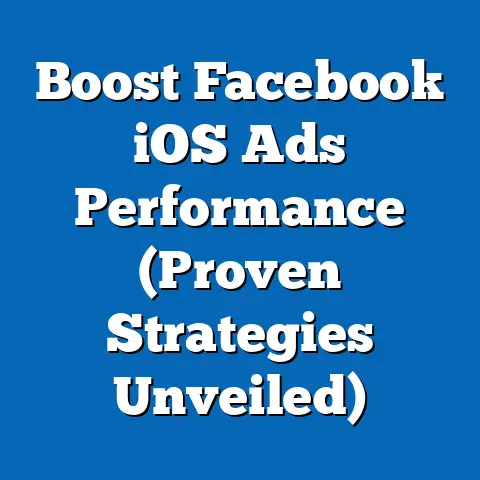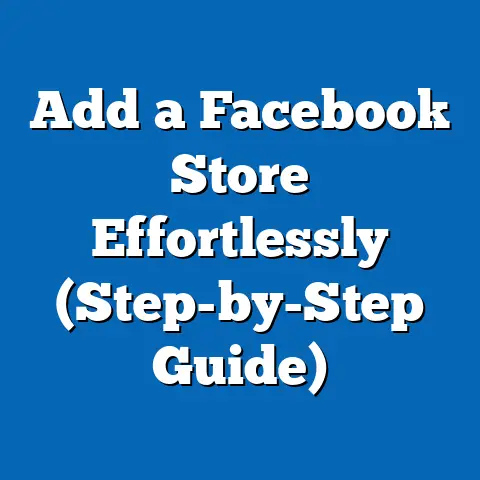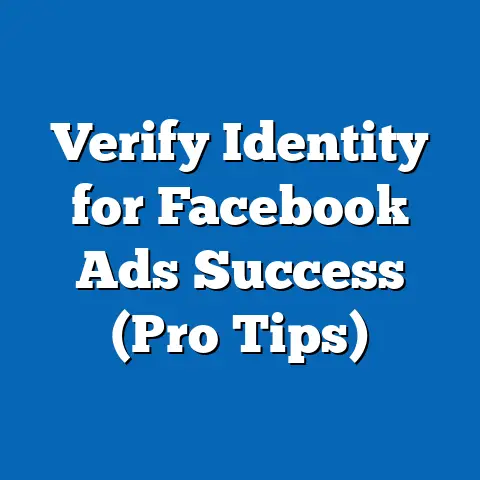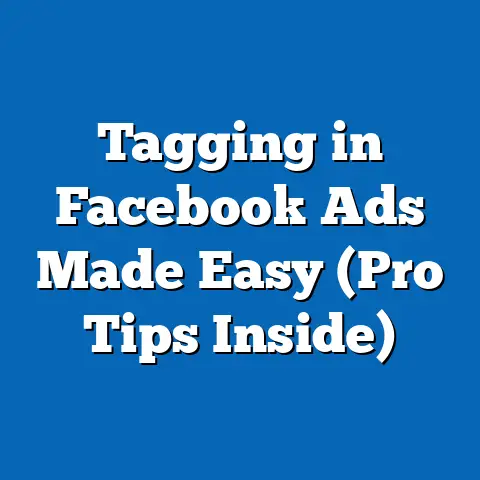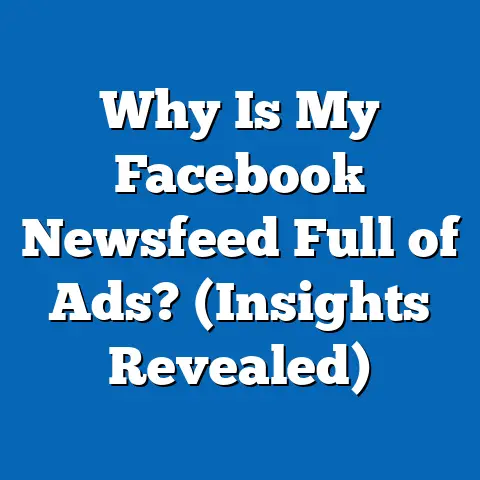CPM vs CPC in Facebook Ads (Mastering Cost Strategies)
Advertising has come a long way from the days of Mad Men and static billboards. Back then, the game was all about getting your message out to as many eyeballs as possible, with little way to track actual engagement. Traditional advertising channels like print media and television largely operated on a cost-per-impression basis (CPM). You paid for the potential reach, hoping your message resonated.
Enter the digital age, and everything changed. Platforms like Facebook revolutionized how advertisers approached their target audiences, offering not just massive reach, but also granular targeting and measurable results. And with this shift came new ways to pay for advertising, most notably, Cost Per Click (CPC).
Section 1: Understanding CPM (Cost Per Mille)
CPM, or Cost Per Mille (Mille is Latin for thousand), represents the cost you pay for every 1,000 impressions of your ad. An “impression” simply means that your ad was displayed to a user, regardless of whether they clicked on it or not. So, if your CPM is $5, you’ll pay $5 every time your ad is shown 1,000 times.
Calculation: CPM = (Total Ad Spend / Total Impressions) x 1000
Why is it important? CPM is particularly valuable for brand awareness campaigns. It allows you to get your message in front of a large audience, increasing visibility and recognition. It’s less about immediate action and more about planting a seed in the minds of potential customers.
When to use CPM:
- Launching a new product or service: When you want to create buzz and familiarity around a new offering.
- Promoting an event: Getting the word out to a broad audience to maximize attendance.
- Building brand recognition: Consistent exposure to your brand can lead to increased trust and loyalty over time.
Example: Imagine you’re launching a new line of organic skincare products. You’re not necessarily expecting immediate sales, but you want to introduce your brand to a health-conscious audience. A CPM campaign targeting users interested in natural beauty and wellness could be highly effective.
Statistical Data: According to recent industry reports, the average CPM on Facebook can range from $7 to $12, depending on factors like audience targeting, ad placement, and industry. I’ve personally seen CPMs fluctuate wildly based on the time of year, with costs generally increasing during peak advertising seasons like the holidays.
Takeaway: CPM is your go-to strategy when your primary goal is to get your brand seen. It’s about broad reach and building awareness, not necessarily driving immediate actions.
Section 2: Understanding CPC (Cost Per Click)
CPC, or Cost Per Click, is a pricing model where you pay each time someone clicks on your ad. Unlike CPM, you only incur a cost when a user actively engages with your ad by clicking on it.
Calculation: CPC = Total Ad Spend / Total Clicks
Why is it important? CPC is ideal for direct response campaigns where you want to drive specific actions, such as website visits, lead generation, or sales. It’s a more targeted approach that focuses on users who are actively interested in what you have to offer.
When to use CPC:
- Lead generation campaigns: Driving traffic to a landing page where users can sign up for your newsletter or request a demo.
- Driving traffic to a website: Encouraging users to visit your website to learn more about your products or services.
- Promoting sales or special offers: Directing users to your online store to make a purchase.
Example: Let’s say you’re running a campaign to promote a limited-time discount on your online course. A CPC campaign targeting users interested in online learning and your specific course topic could be highly effective in driving conversions.
Statistical Data: The average CPC on Facebook can range from $0.50 to $2.00, depending on factors like industry, audience targeting, and ad quality. I’ve found that crafting compelling ad copy and visuals that resonate with your target audience can significantly lower your CPC.
Case Study: I once ran a CPC campaign for a local restaurant offering a lunch special. By targeting users who lived or worked near the restaurant and were interested in food and dining, we were able to drive a significant increase in foot traffic during lunchtime. The CPC was relatively low, and the ROI was substantial.
Takeaway: CPC is your weapon of choice when you want to drive specific actions and are willing to pay only when someone actively engages with your ad.
Section 3: Comparing CPM and CPC
| Feature | CPM (Cost Per Mille) | CPC (Cost Per Click) |
|---|---|---|
| Definition | Cost per 1,000 impressions | Cost per click |
| Goal | Brand awareness, reach, visibility | Direct response, conversions, website traffic |
| Payment Trigger | Ad being displayed | User clicking on the ad |
| Target Audience | Broad | Targeted |
| Best For | New product launches, event promotion, branding | Lead generation, sales, website promotions |
| Pros | Cost-effective for broad reach, increased visibility | Targeted, measurable, pay-for-performance |
| Cons | Less targeted, potential for wasted impressions | Can be more expensive if ad isn’t engaging, requires optimization |
| Feature | CPM (Cost Per Mille) | CPC (Cost Per Click) |
|---|---|---|
| Definition | Cost per 1,000 impressions | Cost per click |
| Goal | Brand awareness, reach, visibility | Direct response, conversions, website traffic |
| Payment Trigger | Ad being displayed | User clicking on the ad |
| Target Audience | Broad | Targeted |
| Best For | New product launches, event promotion, branding | Lead generation, sales, website promotions |
| Pros | Cost-effective for broad reach, increased visibility | Targeted, measurable, pay-for-performance |
| Cons | Less targeted, potential for wasted impressions | Can be more expensive if ad isn’t engaging, requires optimization |
When to Choose CPM vs. CPC:
- Choose CPM when: You’re launching a new brand, want to reach a large audience, or are focused on building brand awareness. Think of it as casting a wide net.
- Choose CPC when: You have a clear call to action, want to drive specific actions, or are focused on ROI. Think of it as a targeted spear.
Impact of Audience Targeting: The effectiveness of both CPM and CPC campaigns hinges on accurate audience targeting. A poorly targeted CPM campaign can result in wasted impressions, while a poorly targeted CPC campaign can lead to low click-through rates and high costs. I always recommend spending time refining your audience targeting to ensure your ads are reaching the right people.
Graphical Representation:
(Imagine a bar graph here showing the average CPM and CPC across different industries. The graph would visually illustrate the differences in cost and highlight the industries where each model is more prevalent.)
Takeaway: The choice between CPM and CPC depends entirely on your campaign goals, target audience, and budget. Understanding the nuances of each model is crucial for making informed decisions.
Section 4: Factors Influencing the Choice Between CPM and CPC
Several key factors can influence whether CPM or CPC is the better choice for your Facebook advertising campaigns.
- Audience Demographics: If your target audience is broad and undefined, CPM might be more effective for reaching a wider range of potential customers. However, if you have a specific demographic in mind, CPC allows for more precise targeting and potentially higher conversion rates.
- Campaign Goals: As we’ve discussed, brand awareness campaigns typically benefit from CPM, while campaigns focused on driving sales or leads are better suited for CPC.
- Product Type: Products with a high degree of impulse purchase potential might perform well with CPC campaigns, as users are more likely to click through and make a purchase. On the other hand, products that require more research or consideration might benefit from CPM campaigns that build brand awareness over time.
- Market Competition: In highly competitive markets, CPC can become expensive as advertisers bid against each other for clicks. In these situations, CPM might be a more cost-effective way to reach a large audience.
- Ad Creative and Messaging: Compelling ad creative and messaging are essential for both CPM and CPC campaigns. However, in CPC campaigns, the ad must be highly engaging and relevant to the target audience to encourage clicks. I’ve found that A/B testing different ad variations can significantly improve click-through rates and lower CPC.
Takeaway: Consider all these factors carefully when deciding between CPM and CPC. There’s no one-size-fits-all answer, and the best approach will depend on your specific circumstances.
Section 5: Case Studies and Real-World Applications
Let’s dive into some real-world examples to see how CPM and CPC strategies have been used effectively on Facebook.
Case Study 1: CPM for a New Mobile App Launch
- Industry: Mobile App Development
- Goal: Generate awareness and downloads for a new productivity app.
- Strategy: A CPM campaign targeted users interested in productivity, time management, and technology. The ad creative showcased the app’s key features and benefits.
- Results: The campaign generated millions of impressions and increased brand awareness. While direct downloads were not the primary focus, the increased visibility led to a significant uptick in organic downloads over time.
- Lessons Learned: CPM is effective for creating buzz and generating awareness around a new product, especially when combined with a strong brand message.
Case Study 2: CPC for a Local E-commerce Store
- Industry: E-commerce (Home Goods)
- Goal: Drive sales for a specific product line (e.g., eco-friendly cleaning supplies).
- Strategy: A CPC campaign targeted users interested in sustainable living, home improvement, and online shopping. The ad creative featured high-quality images of the products and a clear call to action (“Shop Now”).
- Results: The campaign generated a high click-through rate and a significant increase in sales for the targeted product line. The ROI was substantial due to the targeted nature of the campaign.
- Lessons Learned: CPC is ideal for driving sales when you have a specific product or offer to promote and can target a highly relevant audience.
Case Study 3: Hybrid Approach for a Subscription Box Service
- Industry: Subscription Box
- Goal: Increase brand awareness and drive new subscriptions.
- Strategy: A hybrid approach was used, combining CPM for initial brand awareness with CPC to drive sign-ups. The CPM campaign focused on reaching a broad audience interested in curated lifestyle products. The CPC campaign targeted users who had engaged with the CPM ads or visited the website, encouraging them to subscribe.
- Results: The hybrid approach proved to be highly effective. The CPM campaign created a foundation of brand awareness, while the CPC campaign converted interested users into paying subscribers.
- Lessons Learned: Combining CPM and CPC can be a powerful strategy for achieving multiple goals, such as building brand awareness and driving conversions.
Takeaway: These case studies highlight the importance of aligning your cost strategy with your campaign goals and target audience. There’s no magic bullet, and the best approach will vary depending on your specific circumstances.
Conclusion
Mastering the art of Facebook advertising requires a deep understanding of cost strategies like CPM and CPC. By understanding the strengths and weaknesses of each model, and knowing when to leverage them, you can significantly improve the performance of your campaigns and maximize your ROI.
Remember, CPM is your go-to strategy for building brand awareness and reaching a broad audience, while CPC is ideal for driving specific actions and conversions. Consider your campaign goals, target audience, and budget when making your decision.
The digital advertising landscape is constantly evolving, and new cost strategies and technologies are emerging all the time. Stay curious, keep learning, and never stop experimenting. The future of advertising is bright, and those who master these strategies will be well-positioned to succeed.
So, go forth and conquer the world of Facebook advertising! I’m confident that with the knowledge you’ve gained in this article, you’ll be well on your way to creating successful and profitable campaigns.

